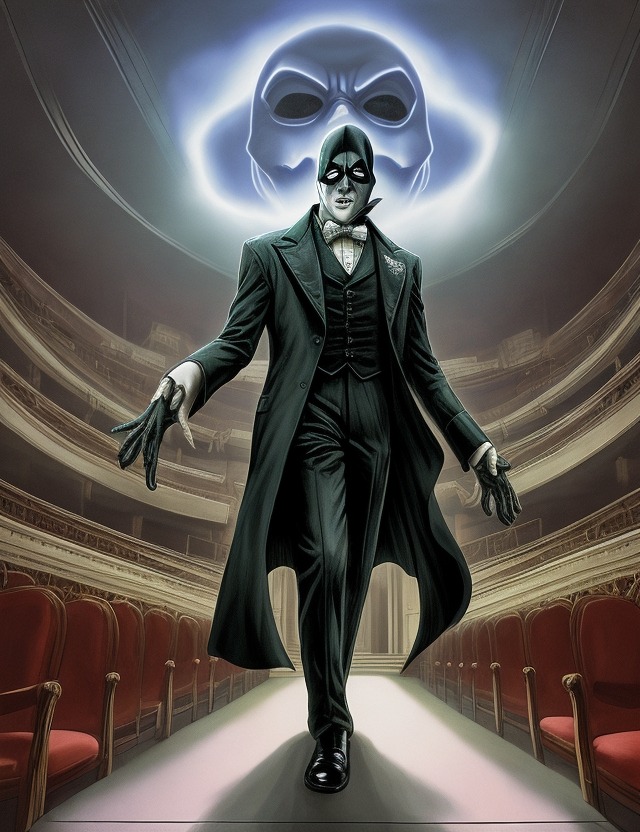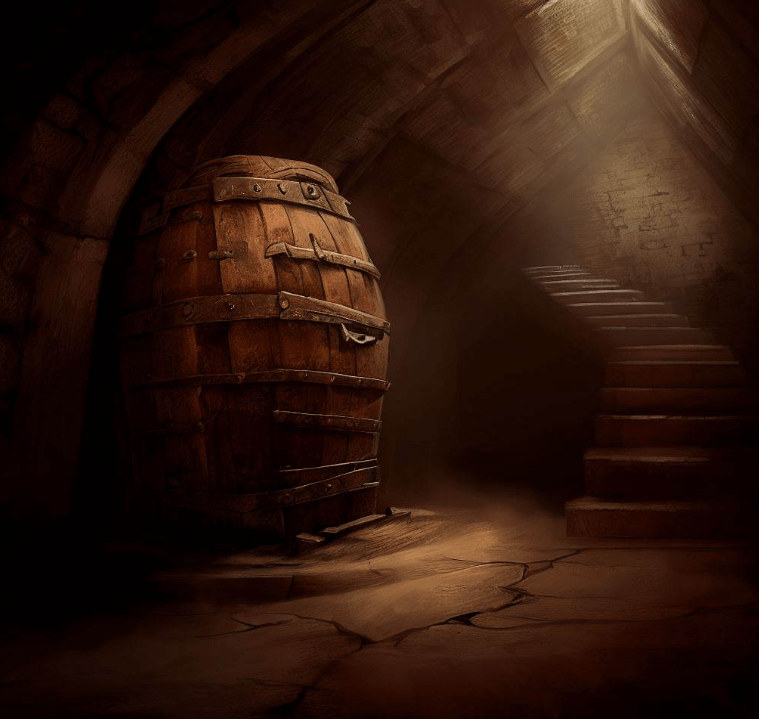Horror is a genre that revolves around frightening, suspenseful, and sometimes supernatural or paranormal elements. It is often a popular genre of short stories for kids because it appeals to their imagination, curiosity, and emotions in unique ways.
Firstly, horror stories tap into children’s imagination by presenting them with eerie and unpredictable scenarios. The dark and mysterious elements of horror stimulate their creativity, allowing them to envision fantastical worlds and creatures. This sparks their imagination and encourages them to think beyond conventional boundaries, fostering their cognitive and artistic development.
Secondly, horror stories appeal to kids’ curiosity, as they provoke questions about the unknown. By introducing elements of fear and the supernatural, these stories pique their interest in exploring the unfamiliar. They prompt children to question and seek answers, nurturing their inquisitiveness and propelling their desire to learn and discover the world around them.
The main point of this article is to highlight that horror, as a genre of short stories for kids, offers unique benefits by appealing to their imagination, curiosity, and emotions. Through scary and suspenseful narratives, horror stories foster creativity, stimulate curiosity, and help children understand and manage their emotions.
It is crucial to note that while horror stories can provide valuable developmental experiences, not all children have the same tolerance for scary content. Therefore, parents, educators, and guardians should be aware of each child’s individual sensitivity levels and age appropriateness when selecting or discussing horror stories with them.
Horror Short Stories Genre: Examples
Best Horror Stories of all Time
These selected works represent the appeal, diversity, and relevance of the horror genre through their ability to evoke fear, provoke thought, and explore complex themes for halloween. They showcase horror’s appeal through the thrill of the unknown and its ability to confront our deepest fears and anxieties. Additionally, the genre’s diversity is exemplified through the exploration of different subgenres such as psychological horror, atmospheric horror, and gothic horror. Lastly, these works demonstrate the genre’s continued relevance by tackling timeless themes like the human condition, morality, and the supernatural.
Horror Stories in English with Pictures
Horror Short Stories Genre: Authors
Some of the famous authors of the horror genre include:
- Edgar Allan Poe: As one of the pioneers of horror and mystery literature, Edgar Allan Poe greatly contributed to the development and popularity of the genre. His works, such as “The Raven,” “The Tell-Tale Heart,” and “The Fall of the House of Usher,” explored the themes of madness, fear, and the macabre, establishing him as a master of horror and psychological suspense. Poe’s ability to create vivid atmospheres and explore the darkest corners of the human mind has hugely influenced subsequent horror writers and readers.
- H.P. Lovecraft: Lovecraft is known for his creation of the “Cthulhu Mythos,” a shared fictional universe that blended elements of horror, science fiction, and cosmic dread. His works, including “The Call of Cthulhu,” “At the Mountains of Madness,” and “The Shadow over Innsmouth,” showcased his unique blend of atmospheric horror, philosophical themes, and cosmic entities. Lovecraft’s influence on the horror genre extends beyond his lifetime, as his concepts and creatures have inspired countless authors, filmmakers, and artists.
- Stephen King: Often referred to as the “Master of Horror,” Stephen King has contributed immensely to the popularity and modernization of the genre. With best-selling novels like “Carrie,” “The Shining,” and “It,” King captivated readers with his ability to create multifaceted characters, intricate plots, and deeply disturbing settings. His works often delve into the psychological aspects of horror, while exploring the monsters that exist within everyday life. King’s commercial success and prolificacy have made him a widely recognized figure who has inspired numerous contemporary horror writers.
- Mary Shelley: Although primarily known for her groundbreaking novel “Frankenstein,” Mary Shelley’s contribution to the horror genre cannot be overstated. “Frankenstein” challenged societal norms and explored themes of morality, creation, and the consequences of human ambition. Shelley’s novel is considered a foundational work of both horror and science fiction, emphasizing the moral responsibility of humanity when tampering with nature. Her influence on subsequent horror writers is evident in their exploration of Gothic aesthetics, ethical dilemmas, and the concept of the “mad scientist.”
- Shirley Jackson: Recognized for her works of psychological horror, Shirley Jackson pushed the boundaries of the genre. Notably, her short story “The Lottery” caused a stir upon its publication. Jackson’s ability to create an atmosphere of dread through psychological tension and examination of human nature set her apart. Her novel “The Haunting of Hill House” further solidified her reputation as a master of horror. Jackson’s innovative approach to the genre and focus on the internal fears and anxieties of characters greatly influenced subsequent writers, especially in the areas of psychological horror and the domestic uncanny.
These authors, through their unique narrative styles, exploration of human fears, and boundary-pushing concepts, have greatly influenced both writers and readers of horror. They have shaped the genre by introducing new themes, techniques, and subgenres, ensuring the enduring popularity of horror literature.
Horror Short Stories Genre : History
The genre of horror emerged in the late 18th century and early 19th century. It is often associated with Gothic literature, which originated in Europe during the Romantic era. Some of the key historical, cultural, and social factors that influenced the emergence of horror include:
- Gothic Literature: The rise of Gothic literature played a significant role in establishing horror as a genre. Works such as “The Castle of Otranto” by Horace Walpole and “Frankenstein” by Mary Shelley are often considered pioneering works in this genre.
- The Industrial Revolution: The Industrial Revolution brought about significant social and cultural changes, leading to an increased interest in the supernatural, unknown, and macabre. The anxieties surrounding industrialization and the fear of the unknown influenced the themes and elements found in horror.
- Scientific Advancements: Advancements in science during the 19th century, particularly in the fields of medicine and psychology, influenced horror literature. Ideas of human experimentation, madness, and the alteration of the natural order became recurring themes in horror works.
- Cultural Folklore and Mythology: Folklore, mythology, and superstitions from various cultures also influenced the horror genre. Writers drew inspiration from legends, monsters, and creatures rooted in folklore, such as vampires, werewolves, and ghosts.
Some landmark works and trends in the horror genre include:
- “Dracula” by Bram Stoker (1897): This novel is considered a landmark work that established many conventions of vampire fiction, including the notion of the undead, their weaknesses, and their seductive nature.
- “Frankenstein” by Mary Shelley (1818): Shelley’s novel is recognized as a pioneering work in science fiction and horror, exploring themes of creation, morality, and the repercussions of playing god.
- “The Strange Case of Dr. Jekyll and Mr. Hyde” by Robert Louis Stevenson (1886): This novella delves into the duality of human nature, exploring the transformative effects of a sinister potion on a respectable doctor.
- The emergence of psychological horror in the 20th century, with works such as “The Turn of the Screw” by Henry James (1898) and “Psycho” by Robert Bloch (1959), which introduced psychological and suspenseful elements to the genre.
Overall, the horror genre has continuously evolved and adapted over time, reflecting the fears, anxieties, and societal changes in different eras while captivating audiences with its exploration of the dark and unknown.
Horror Short Stories Genre: Characteristics
Key characteristics of the horror genre include elements of fear, suspense, and an unsettling atmosphere. Horror often employs supernatural or paranormal elements, such as ghosts, monsters, or demons, to create a sense of terror. It can also involve psychological horror, where the fear comes from the depths of the human mind.
- In terms of language, horror relies on descriptive and vivid writing to paint a terrifying picture for the reader. The use of sensory details helps to immerse the reader in the story’s eerie atmosphere. Dialogue in horror can be chilling and filled with tension, adding to the overall sense of fear.
- Plot in horror often follows a pattern of building tension and suspense, with unexpected twists and terrifying revelations. It may involve characters facing personal fears, encountering supernatural beings, or trying to survive in horrifying situations. Horror stories frequently feature characters who are vulnerable, facing imminent danger, or grappling with their darkest fears.
- Setting plays a crucial role in horror, as it often takes place in eerie, isolated, or haunted locations. Abandoned houses, dark forests, or cursed towns are common settings that add to the sense of dread and unease. The setting can become a character in itself, contributing to the overall atmosphere and horror of the story.
- Tone in horror is generally dark, foreboding, and filled with a sense of impending doom. It can range from subtle and creepy to intense and graphic, depending on the target audience. The tone helps to establish and maintain a feeling of tension and fright throughout the story.
- Typical themes in horror include mortality, the unknown, the supernatural, and psychological fears. Horror often explores societal anxieties and taps into universal fears such as death, loss, isolation, and the fear of the inexplicable. The genre can also delve into deeper themes, such as the nature of evil, the human capacity for darkness, or the consequences of unleashing forbidden knowledge.
Horror appeals to kids because it allows them to experience a controlled sense of fear in a safe environment. It can provide an outlet for their curiosity about the unknown and allow them to confront and understand their own fears. Horror stories often provide a thrilling escape from reality and tap into the excitement of the unknown. Additionally, horror can also serve as a metaphor for overcoming personal struggles, conquering fears, and finding courage in the face of adversity.
Horror Short Stories Genre: Benefits
Reading horror genre books can have several benefits for kids in terms of enhancing their reading comprehension, vocabulary, and critical thinking skills. Here are some ways in which the horror genre can contribute to these areas:
- Reading Comprehension: Horror stories often require readers to pay close attention to details, analyze plot developments, and make connections between different events. This practice improves their overall reading comprehension skills.
- Vocabulary: Horror books typically feature rich and varied vocabulary to create suspense, describe eerie settings, and depict frightening situations. By reading these books, kids can expand their vocabulary and learn new words in context.
- Critical Thinking: Horror stories often involve unexpected twists and turns, intricate plots, and complex character motivations. This prompts readers to think critically and develop skills in evaluating evidence, making predictions, and drawing logical conclusions.
- Broadening Horizons: Horror genre exposes children to different concepts, cultures, and perspectives. For instance, they may learn about folklore, mythology, or supernatural creatures from various cultures, expanding their knowledge and understanding of the world around them.
- Enriching Culture: Horror books often draw on cultural traditions, myths, and legends, providing opportunities for kids to explore and appreciate different cultural backgrounds. This exposure can foster cultural appreciation and promote diversity.
- Fostering Creativity: Horror stories push the boundaries of imagination and creativity. This genre encourages kids to develop their own ideas, create vivid mental images, and invent unique storylines. By engaging with horror, they can explore their own creativity and potentially develop a passion for storytelling.
- Motivation and Empowerment: Horror books often revolve around characters facing challenges, overcoming fears, and triumphing over evil. These narratives can inspire and empower children to confront their own fears and difficulties, fostering resilience and self-motivation to pursue their goals and dreams.
Horror Short Stories Genre: Tips
Reading:
1. Choose the right books: Start by selecting halloween books that are appropriate for the age and reading level of your students. Look for well-written, age-appropriate horror stories that will captivate their interest.
2. Create a comfortable environment: Reading horror can be an intense experience, so establishing a safe and comfortable environment is crucial. Encourage open discussions about fears and concerns, and reassure students that they can stop reading or discuss any discomfort they may feel.
3. Encourage critical thinking: Halloween novels often explore complex themes and delve into human nature. Encourage students to analyze the underlying messages, themes, and character motivations, fostering critical thinking skills.
Writing:
1. Develop atmosphere and tension: Horror thrives on creating atmospheric settings and building tension. Help students understand the importance of descriptive language, sensory details, and pacing in order to effectively build suspense.
2. Create multidimensional characters: Engage students in character development exercises, encouraging them to create well-rounded characters with fears, flaws, and personality traits that readers can relate to.
3. Experiment with plot twists: Encourage creativity and experimentation with unexpected plot twists or unexpected outcomes. Teach students how to devise and execute these twists effectively to keep readers engaged and surprised.
Teaching:
1. Know your audience: Be aware of your students’ age, maturity levels, and individual sensitivities when selecting halloween stories texts for teaching. Provide a wide range of horror genres: ghost stories, psychological thrillers, supernatural tales, etc., to cater to different interests.
2. Foster discussions and debates: Horror often tackles moral dilemmas and ethical questions. Encourage classroom discussions where students can debate the choices characters make and discuss the consequences of their actions.
3. Support emotional well-being: Keep a vigilant eye on students’ emotional reactions while studying halloween stories. Provide avenues for students to process any anxiety or fear that may arise, such as open discussions or creative outlets like drawing or writing.
Improving Skills:
1. Read widely: Familiarize yourself with a variety of halloween stories subgenres and authors to broaden your understanding of the genre.
2. Analyze and deconstruct: Read critically, analyzing how successful horror stories are crafted. Understand the techniques used to build tension, create scares, and develop characters in order to apply them effectively in your own writing or teaching.
3. Seek feedback: Share your writing or lesson plans with peers or mentors who specialize in halloween stories or literature. Their feedback can provide valuable insights and help refine your skills.
Engaging and Supporting Kids:
1. Tailor the genre to their interests: Personalize horror reading selections for each student by incorporating their interests and hobbies. This will make them more engaged and open to exploring the genre.
2. Provide choice: Offer multiple horror story options for students to choose from, ensuring they have a say in their learning experience. This can increase their motivation and willingness to engage with the material.
3. Encourage creative responses: Allow students to express their understanding of horror through various creative outlets such as art, music, film-making, or even creating their own horror stories. This enables them to engage with the genre on their own terms.
Overall, by understanding and respecting individual preferences, using age-appropriate content, and fostering a supportive environment, the genre of horror can become an engaging and valuable tool in both teaching and personal growth.



